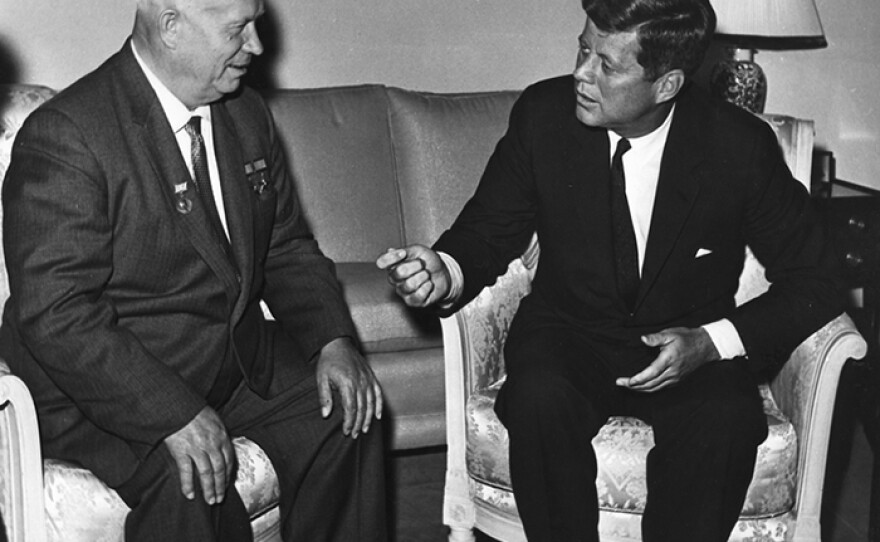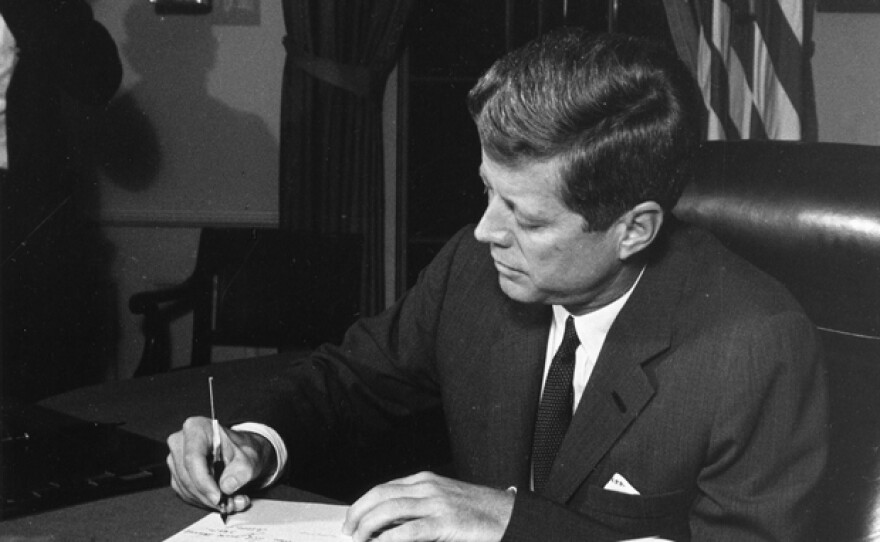—Explore the Inside Story of the 1962 Cuban Missile Crisis—
Two years in the making, "Cuban Missile Crisis: Three Men Go To War" reveals how three human beings grappled with the most dangerous two weeks in human history, when countless events outside their control threatened to ignite a nuclear holocaust that could have ended human civilization.
Revealing just how extraordinarily close we came to mutual self-destruction, this inside story of the Cuban Missile Crisis premiered on PBS in 2012, 50 years after the world was brought to the brink of nuclear disaster.

“Some viewers will remember the days when schoolchildren practiced duck and cover drills because the threat of nuclear attack was imminent,” said John Wilson, Senior Vice President and Chief TV Programming Executive. “Others have no idea that the world came so close to World War III and mutually assured destruction. As new details about this crisis have been declassified, the 50th anniversary is a great opportunity to explore why these events happened and how war was ultimately averted.”

“The film is about this fundamentally important moment when we had the technology to raze our planet and almost did,” says producer and director John Murray. “And how three human beings, the leaders in place at the time, handled the unfolding disaster.”

Bringing to life the three central figures in the crisis — President John F. Kennedy, Soviet Premier Nikita Khrushchev and Cuban leader Fidel Castro — the film explores the roles each played during these most dangerous of times, set against the human stories of ordinary men in the field, such as the first-ever interview with the Soviet soldier who shot down the U2 piloted by U.S. Air Force Major Rudolf Anderson on the worst day of the crisis.
The film features revealing interviews with key witnesses and experts including Sergei Khrushchev, son of the former Soviet premier; Ted Sorensen, former member of the renowned Executive Committee of the U.S. National Security Council; former KGB and CIA operatives, and Captain Jerry Coffee, the reconnaissance pilot who made a split second decision to veer off course in Cuba and photograph a new type of nuclear weapon which could have annihilated invading American forces, the import of which was not realized for over 30 years.
"Cuban Missile Crisis - Three Men Go To War" was shot on location in Russia, Cuba and the U.S.
Watch On Your Schedule:
This film is currently available to stream on demand with KPBS Passport, video streaming for members ($60 yearly) using your computer, smartphone, tablet, Roku, AppleTV, Amazon Fire or Chromecast. Learn how to activate your benefit now.
Credits:
Produced by John Murray from Crossing the Line Productions, and co-directed by Murray and Emer Reynolds.





